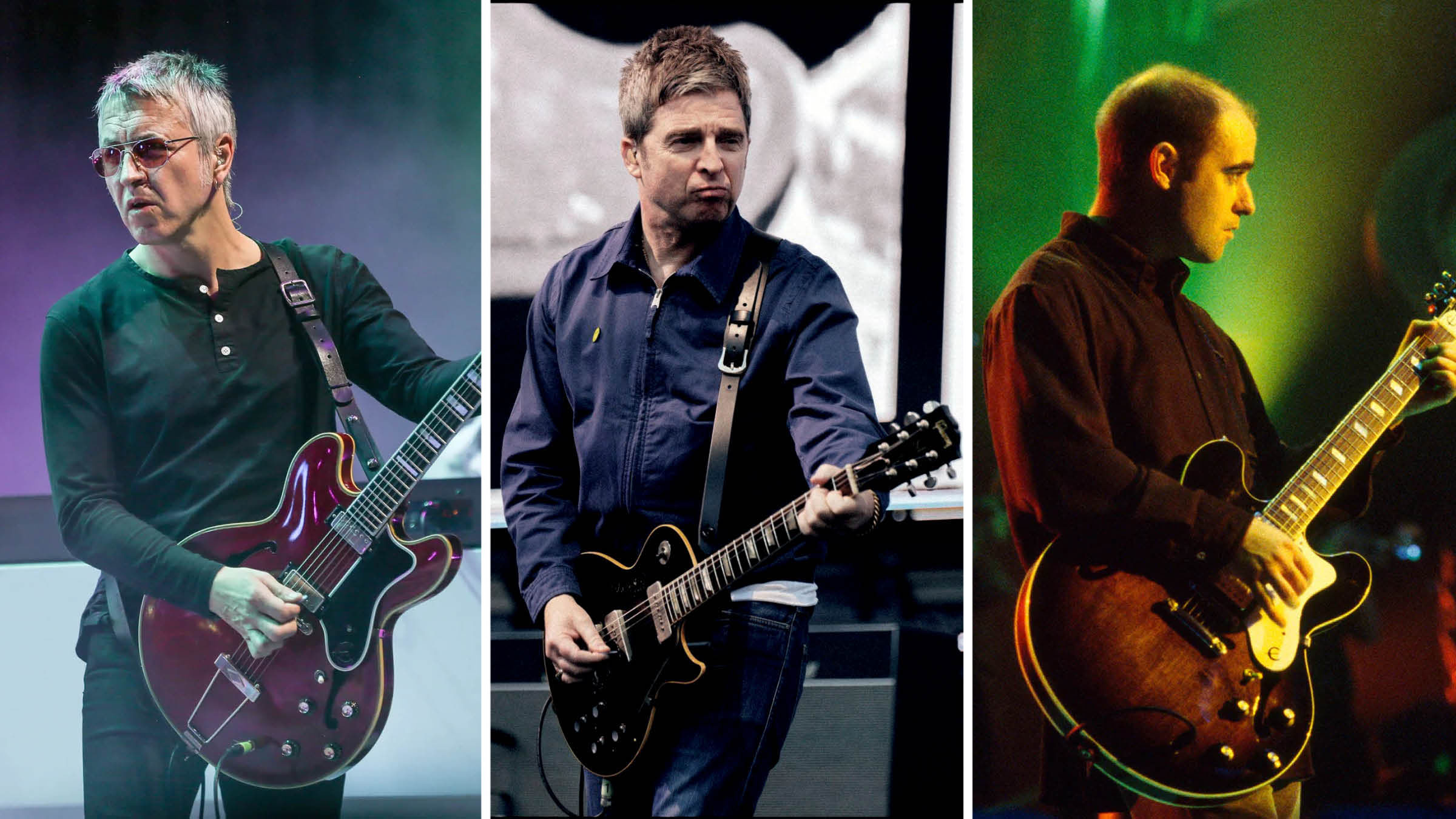“You can take the back of this guitar off and the thing stays in tune as well as if it had the back on”: How L.R. Baggs reinvented the acoustic electric guitar
Delivering convincing amplified acoustic guitar tone is one of the hardest feats for guitar makers – but somehow L.R. Baggs cracked it. Lloyd Baggs shares its story of radical innovation
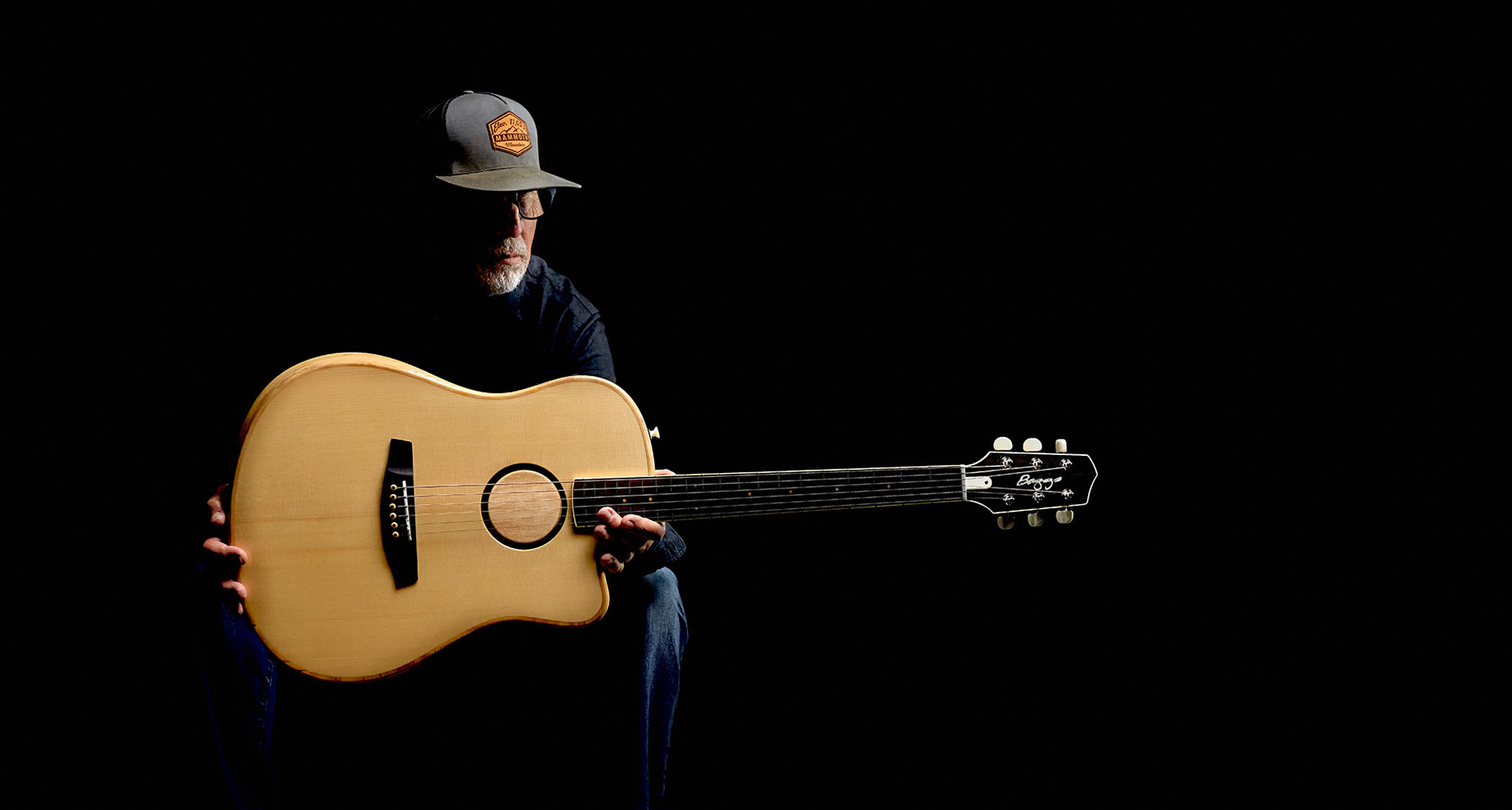
Lloyd Baggs is the genial genius behind the mighty LR Baggs acoustic guitar pickup company that today supplies some of the biggest artists and guitar brands in the business.
We joined him earlier this year to hear how slide legend Ry Cooder inspired him to get the whole thing started – and learn why his new AEG-1 guitar may be a game-changer.
LR Baggs is one of the biggest names in acoustic pickups – but how did you originally get started on that quest?
“Well, I started making acoustic guitars back in around 1975, and I had some great clients. I made guitars for Janis Ian, Ry Cooder, Jackson Browne, Graham Nash… a whole bunch of the LA guys. Ry was one of the pioneers of amplified acoustic and he was always experimenting with stuff.
“He would come by a lot to my studio, and we would put the pickup system du jour in the guitar, and he had this rack full of equipment about the size of a little refrigerator that he had to tour with to make it kind of work.
“One of the early influences in what we do [today] was observing him swearing at the rack, right? I’d be over at his place and he’d be swearing at this thing – it was like he needed it, but he hated it.”
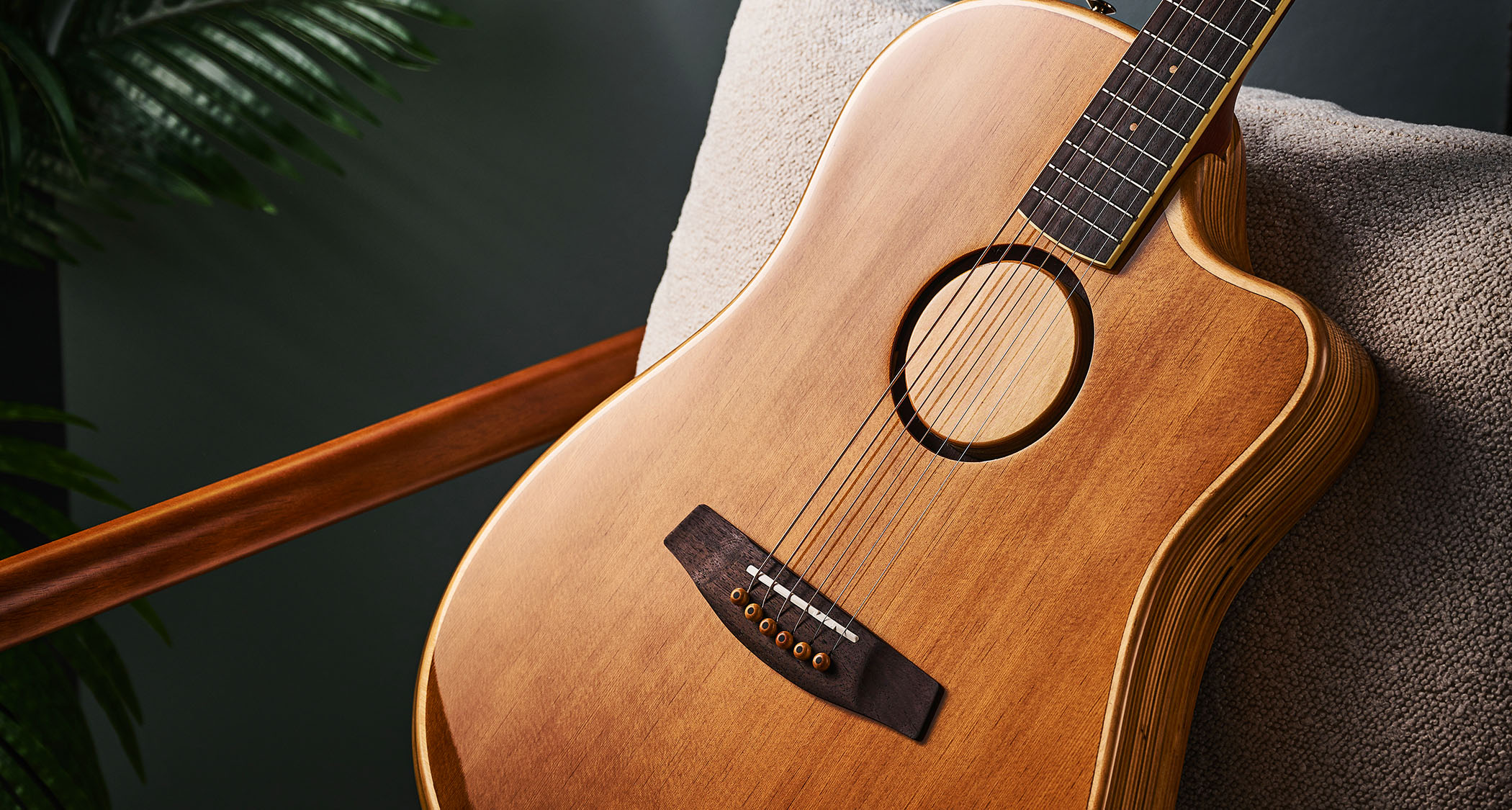
“And so that experience of watching the pain that he went through in the early days, trying to amplify his instrument, really became our tent post. It was like, ‘Okay, we’re gonna make it simple and we’re gonna make it painless and we’re gonna make it work.’”
All the latest guitar news, interviews, lessons, reviews, deals and more, direct to your inbox!
I think it’s oxymoronic. The guitar is a speaker, so you’re putting a pickup on a speaker and you’re amplifying a speaker... It’s just really weird!
Despite your success in making acoustic pickup systems, we don’t envy you the job – getting a really good amplified acoustic sound seems such an elusive thing. Do you feel it’s a bit of a black art, or at the very least an especially challenging task?
“Well, I think it’s oxymoronic. The guitar is a speaker, so you’re putting a pickup on a speaker and you’re amplifying a speaker – but the ‘speaker’ amplifies [itself] anyway, so you’re amplifying an amplifier. It’s just really weird!”
An overlooked aspect of acoustic pickup design is how they can leave you feeling oddly disconnected from the guitar because the experience of playing an amplified acoustic is so very different from that of playing it at home, unplugged. How do you make that feedback loop between mind, fingers, guitar and amplifier feel more natural?
“That’s the key question, I think, besides the sound. In fact, I would say we prioritise feel over the sound because if it doesn’t feel right, you’re gonna get tired of it. It’s gonna wear you out. You’re not gonna enjoy yourself. You’re not gonna play your best.
“So that’s been a big part of what we’ve been working on: narrowing that divide. It started out as the Grand Canyon, but I think we’re getting closer to having something that feels and sounds organic and right.”
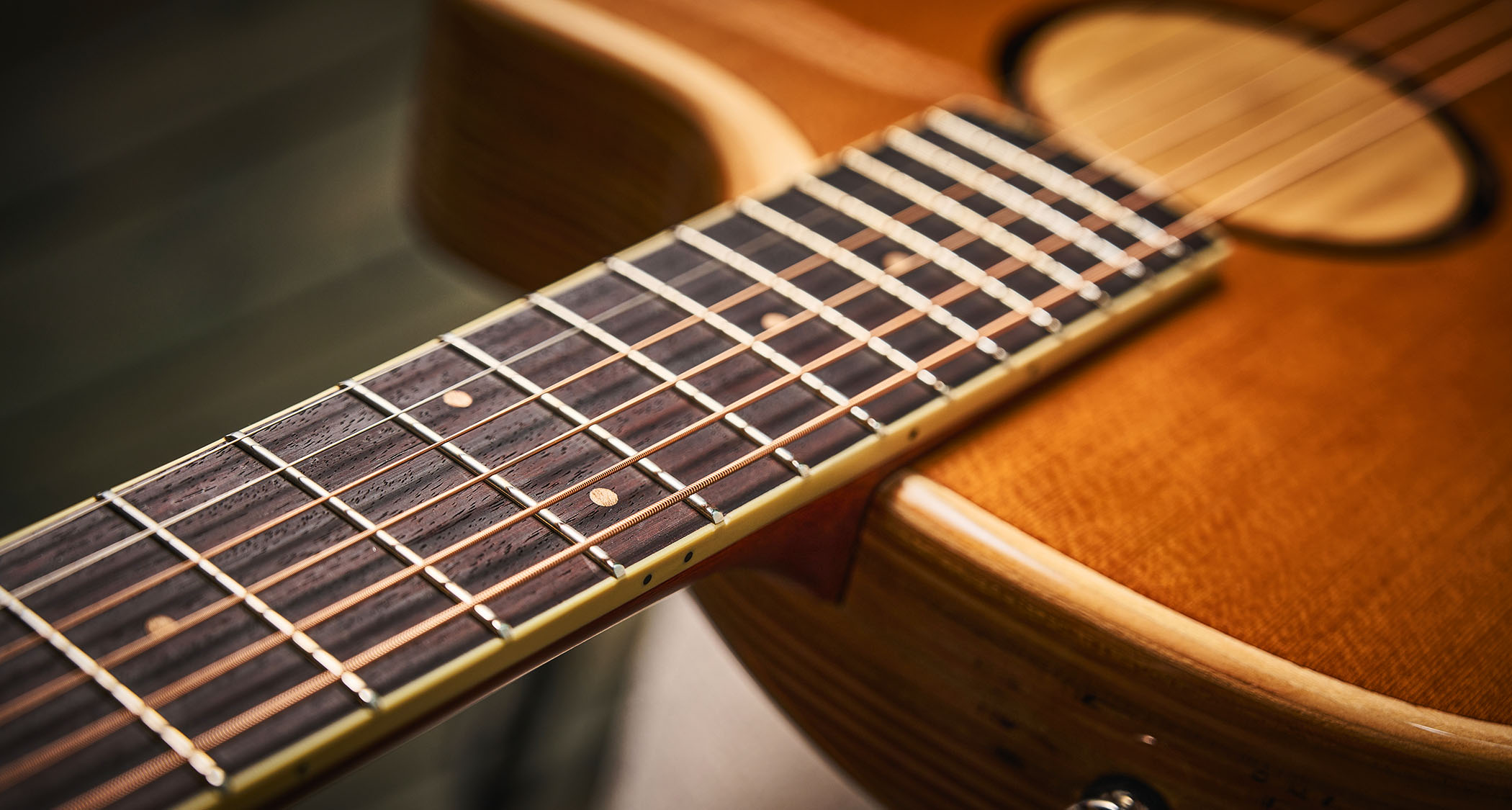
LR Baggs has really led the way in offering pro-grade alternatives to the ubiquitous under-saddle piezo pickup, such as the excellent HiFi system and now the HiFi Duet pickup – which adds a ‘Silo’ microphone to the equation – that’s been used so successfully on your new AEG-1 guitar. Tell us about the inception of that ‘piezo beating’ pickup.
“Thank you. Well, it started out with our HiFi pickups – and those are bridge-plate transducers. The under-saddle [piezo] pickup has [by contrast] become a useful necessity, but it’s not exactly a beloved thing, and installing it is always difficult.
“So we’ve been trying to make a bridge-plate pickup that worked [as an alternative to under-saddle piezo units]. Our first one was the iBeam, about 15, 20 years ago, and that sounded really good, but it wasn’t very stable. Play a coffee shop and you’re good. Record with it, you’re good. Put it on a big stage? Nah.”
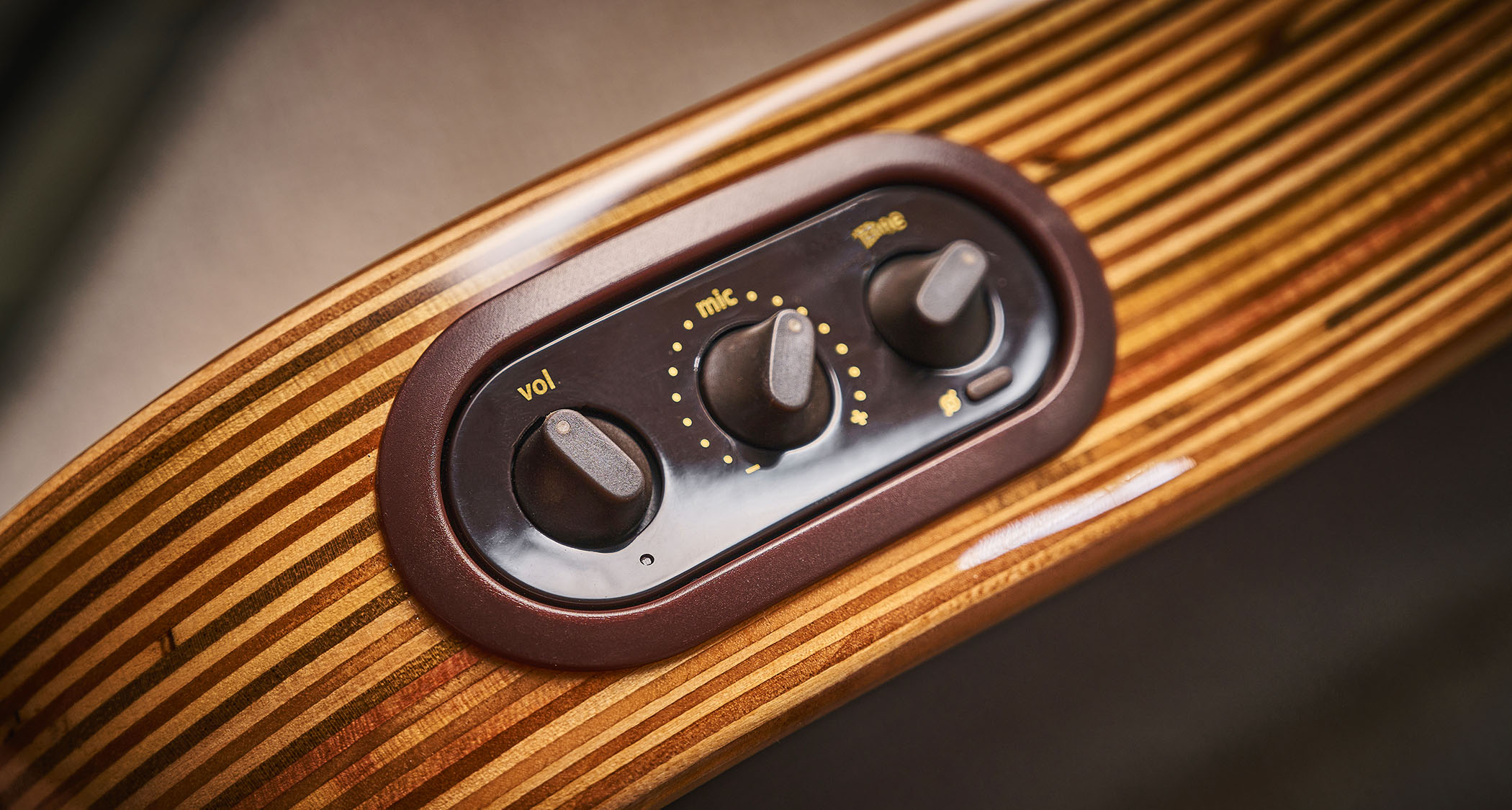
“So we just continued to work on it. I had something close to it about five years ago, and then I took it to Nashville to beta-test it, and it was kind of a failure. So I gave up on it at the time and our general manager, Bo [Radis], said, ‘Hey, mind if I work on it?’ And he figured it out.
“The thing that makes it different is that there’s a bunch of bridge-plate pickups, the acoustic Feather, K&K… but the typical bridge-plate pickup isn’t very dynamic and it feeds back early. So that was the goal.
“The big news about the HiFi is that it’s a bridge-plate transducer that is dynamic: we tested it against the Element under-saddle in 20-odd guitars and in every single guitar but one, it was 1dB or 2dB better [at resisting] feedback than the Element.
“So it’s not an under-saddle pickup. It’s got the advantages of an under‑saddle pickup in terms of resistance to feedback and stability, presence and dynamics. But it’s non-invasive. You just stick it on underneath your saddle and drive it away.
Tell us how the excellent new AEG-1 guitar design came about. It really does move the game forward for thinline acoustic-voiced guitars.
“So do you remember the Godin Acousticaster? That was my first acoustic electric – I built that guitar and licensed it to Godin. I was trying to make a good-sounding acoustic electric and it was an advancement.
“But from an acoustic standpoint, it still had that kind of midrange acoustic-electric, banjo twang. So about every couple of years, I would take a couple of days to a week and try to figure out how to make a really good-sounding acoustic electric.
“During Covid we were all working remotely and the guys from the workshop persuaded me to [have another go at the idea]. So I did the standard thing – I hollowed out a solidbody guitar and put a really good acoustic top on it and I thought, ‘This is gonna be really good.’ But when I tried it, it didn’t really sound good – it wasn’t thrilling. It still had that [banjo-like] midrange.”
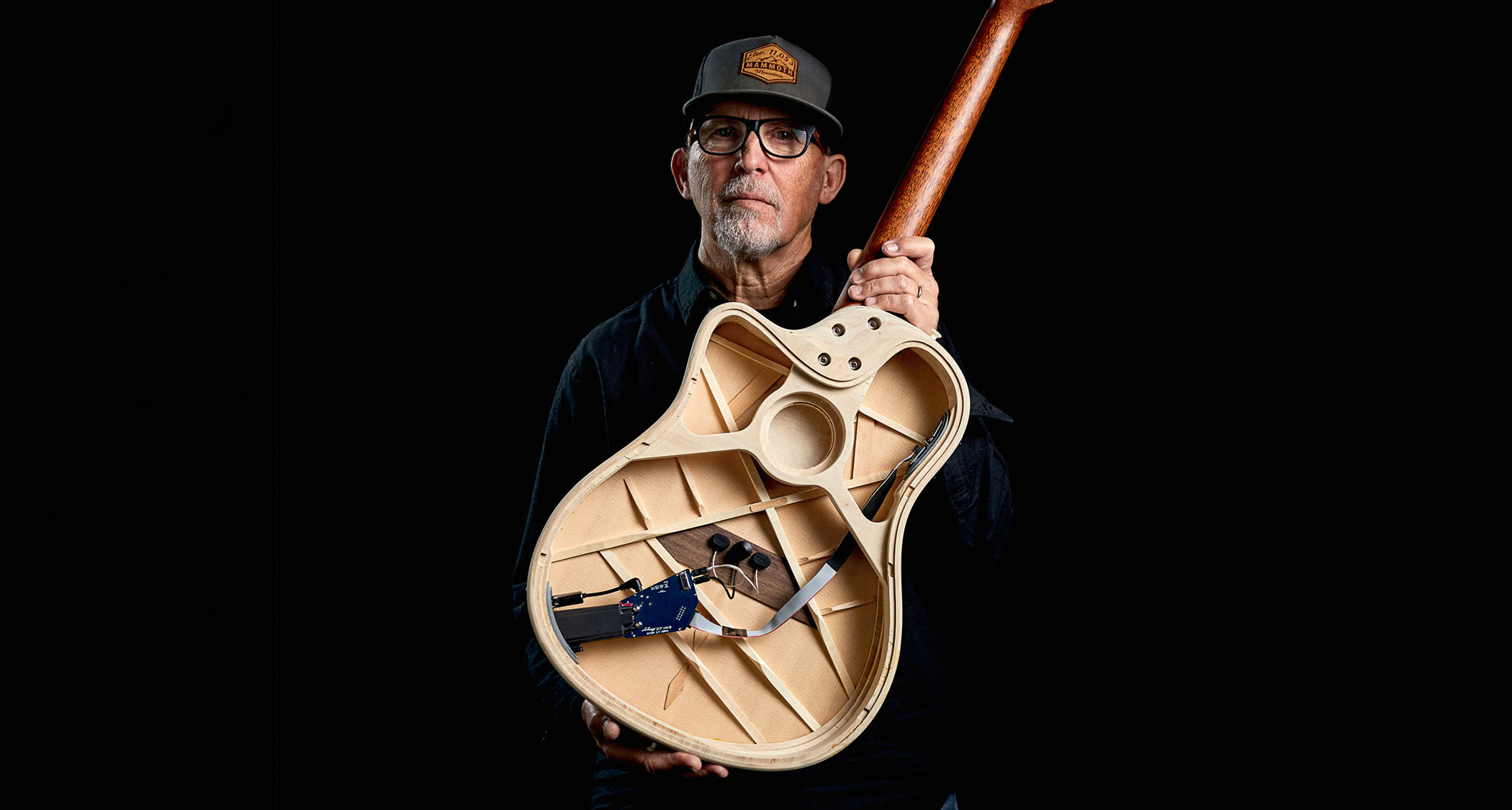
“Then I cut down a cheap 000-size Chinese guitar to the thickness of an acoustic-electric, and I put a bunch of heavy wood around the inside lining. And then I stuck the back on again. That sounded really good.
“Yeah, it didn’t sound quite as good as it did before I cut it down, but I thought, ‘That’s the ticket – it needs a free-floating back.’ I did all kinds of stuff like putting weights on the back, and when I got the back frequency below the frequency of the top, I started to get this really nice bass from it.
“I thought, ‘Okay, it’s got to have a vibrating back.’ Then the question was: ‘Well, if I put a vibrating back on the thing, the neck is going to be like a noodle because the neck attachment point is really important.’ So I wanted a bolt-on neck, but how the heck am I going to do that? And that’s where this thing [holds up the plywood body-frame of the AEG-1] came into existence.
“We’ve applied for a patent on this – this makes the neck super-stable and drives more energy into the top. On a regular guitar, the [glued-on] top and the back are what’s holding the neck in place. So if you take the back off of the guitar, it caves in.
“But with the AEG-1, you can take the back of this guitar off and the thing stays in tune as well as if it had the back on. So that allowed us to voice the top independent of being a structural member. And with the back, we also have total freedom to voice it however we want.”
- “The most convincing acoustic tone from an acoustic electric that we’ve yet heard”: LR Baggs AEG-1 review
- This article first appeared in Guitarist. Subscribe and save.
Jamie Dickson is Editor-in-Chief of Guitarist magazine, Britain's best-selling and longest-running monthly for guitar players. He started his career at the Daily Telegraph in London, where his first assignment was interviewing blue-eyed soul legend Robert Palmer, going on to become a full-time author on music, writing for benchmark references such as 1001 Albums You Must Hear Before You Die and Dorling Kindersley's How To Play Guitar Step By Step. He joined Guitarist in 2011 and since then it has been his privilege to interview everyone from B.B. King to St. Vincent for Guitarist's readers, while sharing insights into scores of historic guitars, from Rory Gallagher's '61 Strat to the first Martin D-28 ever made.
You must confirm your public display name before commenting
Please logout and then login again, you will then be prompted to enter your display name.


